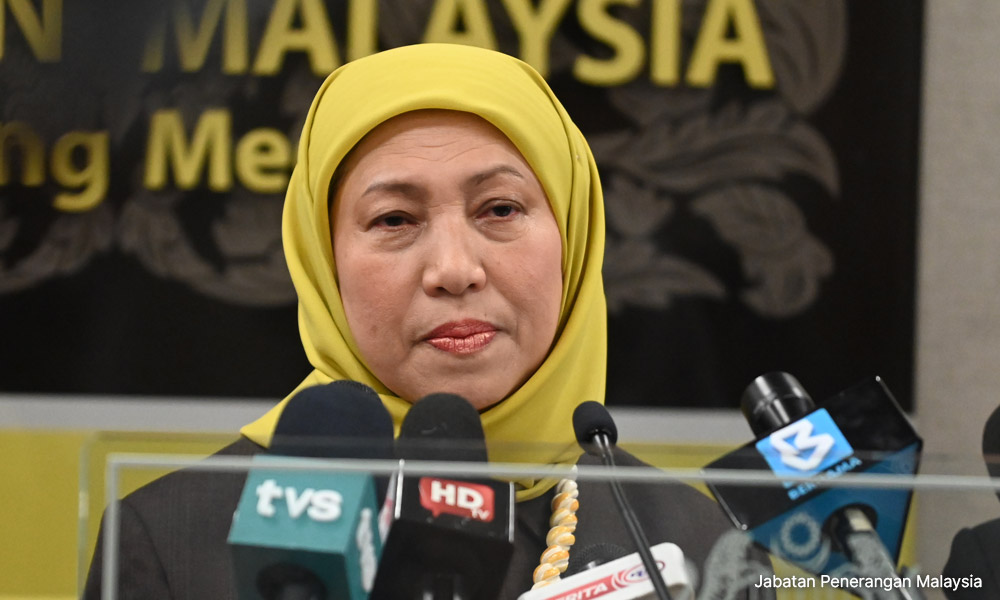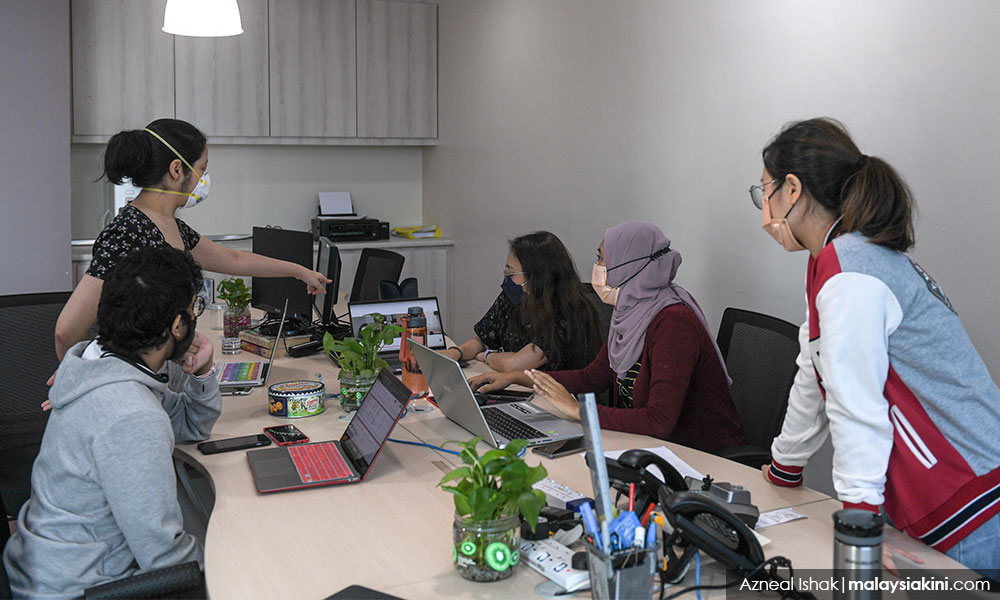Recently, Women, Family and Community Development Minister Nancy Shukri reportedly said the 30 percent quota for women previously set by the government should be reconsidered given that “42 percent of women actively participated in decision-making roles within the public service sector”.
The minister said many women now possess the qualifications, including experience and academic achievements, to compete equally with men in decision-making positions across various service levels.
“Considering that we have already surpassed the 30 percent mark, reaching 42 percent in the public sector, setting a new target at 50 percent or beyond should not be hindered by ceilings or limitations,” she added.
Nancy was responding to comments by former international trade and industry minister Rafidah Aziz in a recent podcast about the removal of the 30 percent quota for women and the need to recognise women as decision-makers based on merit.
For context, let’s review the background of the 30 percent quota for women.
Background
The push for gender equality and women’s empowerment is an ongoing journey.
Way back in 1995, the Beijing Declaration Platform for Action highlighted the need to take measures to ensure “women’s equal access to and full participation in power structures and decision making”.
Article 4 paragraph 1 of the Convention on Elimination of All Forms of Discrimination against Women (Cedaw) calls for states to adopt temporary special measures aimed at accelerating de facto equality between men and women.
These include measures like the allocation of resources, preferential treatment, targeted recruitment and quotas (Cedaw general recommendation 25).

The 30 percent quota for women usually refers to the critical mass of women’s representation believed to be necessary “for women to make a visible impact on the style and content of political decision making”.
The 30 percent quota is not a ceiling but a minimum threshold level, a minimum level to strive towards and to move beyond.
Make no mistake, the quota in no way limits women’s participation in leadership and decision-making. It aims to help correct a discriminatory environment.
Quotas also need to work in tandem with other efforts, such as training, awareness-raising and changing attitudes - much of which needs to target and involve men.
Malaysia, in line with the Beijing Declaration’s platform and being a signatory to Cedaw, took the step in 2004 of announcing a 30 percent policy for women in decision-making levels in the public sector in the Ninth Malaysia Plan.
This was further extended in the “Dasar Wanita Plan of Action 2009” strategy for women in decision-making and politics to achieving at least 30 percent women in decision-making levels at all levels in all sectors including the public sector, private sector, unions, employer associations, education and academic institutions, private and non-governmental agencies.
The target also includes all levels of politics including in Parliament, state assemblies and the Senate.
In 2011, the government announced a policy to target 30 percent of women in decision-making positions across all listed companies by 2016.
Where are we?
So how are we faring on the 30 percent quota for women in decision-making?
Sex-disaggregated data on decision-making positions across a range of sectors would give us an idea. However, here are some figures.
In May last year, the minister informed Parliament that Malaysia has almost achieved its target of having women make up at least 30 percent of board members among the top 100 listed companies.
The number of women at the top management level or C-suite in the public service sector stood at 38.8 percent as of December 2022.

This is good but surely the yardstick of measurement for the 30 percent quota for women in decision-making extends beyond the public service and the boardrooms of listed companies.
What about other decision-making positions, for example, political leadership and participation?
In response to a supplementary question on the fulfilment of the 30 percent women participation target in Parliament, the minister said ensuring at least one-third of women’s participation in Parliament may be a distant dream for now, but not impossible.
Clearly, in some sectors the minimum 30 percent quota for women in decision-making may have been achieved but not in others.
Let’s look closer at women in political leadership and decision-making.
Women currently make up only 16.1 percent of cabinet members, 13.5 percent of parliamentarians, 12.0 percent of state assembly representatives and 16.0 percent of senators.
None of these figures comes close to the minimum target of the 30 percent quota for women.
When women are glaringly absent from political leadership and decision-making in the country, we get a clear picture of who can sit at the decision-making table and influence and make decisions about the direction and policies of the country.
It is not the women.
The absence of women’s voices in politics is the clearest example of the sidelining of women in political decision-making. What a loss to the country this is!

Obviously, the nation needs a greater representation of women in politics. Is this the time to reconsider the 30 percent quota for women?
Detractors of the 30 percent quota say women are already more than qualified and the quota is not needed.
Or they argue on the grounds of the principle of merit or the dampening of competition.
Some argue that “unqualified women are being placed in positions they should not be in”.
They even say, “I did it why can’t they?” or that women are taking away positions from men because of the quota.
Often, many of these detractors speak from a position of privilege (including that of class or connections) or worse, prejudice. Many lack an understanding of the reality of discrimination so many ordinary women face.
Cedaw’s general recommendations 25 para 10 states: “The position of women will not be improved as long as the underlying causes of discrimination against women, and of their inequality, are not effectively addressed…”
Just think of why, for example, it is so difficult to get women’s political representation in government. Attitudes and structures which uphold inequalities and discrimination need to change.
Message to ministers
Ministers, the journey towards gender equality and women’s empowerment is long, as many of you are well aware. We are not just talking about equality and empowerment for the elite class of women in the country.
We need to consider those facing the tough realities of gender inequality and discrimination daily as well.
Ministers, our country needs you to stand firm and uphold the sound policies already in place to increase women’s representation at all levels. We need you to push for these policies to be better implemented, monitored and evaluated.
We need you to educate all those around you (in and out of the cabinet) about what the 30 percent quota for women actually means.
Men need to be as much involved in this as women.
We look forward to the time when this country will not need quotas of any kind when policies are truly inclusive and are both understanding of and capable of addressing people’s needs.
But until then, let’s press on with the work which needs to be done to have an increased representation of women in all sectors. Let’s make Malaysia a nation that fully understands and respects gender equality and women’s empowerment.
PREMA DEVARAJ is currently involved in consultancy work on gender and child rights. This article was first published in Aliran.
The views expressed here are those of the author/contributor and do not necessarily represent the views of MMKtT.

No comments:
Post a Comment
Note: Only a member of this blog may post a comment.